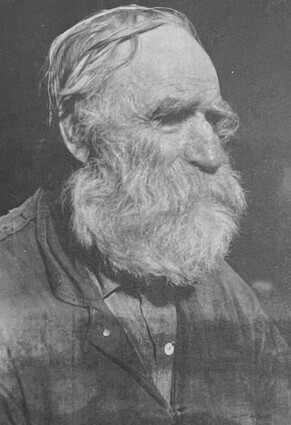Remembering Pioneer Jake Nelson
July 15, 2023
by Ryan Honl
Over the last 125 years one man from time to time gets referenced in the Times-Region and for good reason. Jake Nelson was literally one of the first two European settlers in Roseau County, coming in the mid 1880s building a homestead many years before we became a town or had a newspaper.
"In the summer of 1885, Lon Irish and his two sons, Frank and Elias, and Seward A. Wood, who had hunted in Elk Valley the fall before, made a trip to the Roseau Valley and to the Roseau Lake Indian Village," Jake references in his 1925 memoir "40 Years in the Roseau Valley" which is available today at the Roseau County Museum located in the Roseau City Center. Jake spoke of the vast open meadows of peavine, blue joint, red top and other wild grasses, and was more anxious than ever to visit the region. The "Indian Village" he speaks of was a Native American settlement in present day Ross.
They traveled down the trail off a ridge into the Roseau Valley, and drove thirteen miles across the valley land to the Roseau Lake Indian village situated one and one half miles below the Roseau Lake on the Roseau River. The "ridge" he speaks of can easily be seen today running north/south through Fox and is the shore of the ancient Lake Agassiz. The Roseau Lake he references is north of town towards Minnesota Hill. Today that area floods quite a bit since the building of the new drainage system around Roseau and having been a lake at one time.
Jake's chief interest in the Roseau Valley was the vast open meadows of grass for hay and pasture, since they had more than a hundred head of cattle and horses to pasture and feed. There were miles and miles of unoccupied meadow land, now mostly cleared and farmed ever since.
On November 1, 1885, Seward A. Wood became the first actual settler in the Roseau Valley, and after that time was known as "Wood's Place" which was along the river in present day Roseau somewhere near where the Roso Theatre is today. Jake helped him build that homestead and then returned the following year to build his own. Roseau grew to a sufficient size to become a town just 10 years later in 1895 which also happens to be the first year of having a newspaper with issues you can still view at the museum.
Jake tells about a man named Ryder they had gotten whiskey from, who came from the Red River, probably Grand Forks, with his load on a small sled. He was camping seven miles up the river north of present day Roseau. He is known for a couple of firsts. He ran the first business which at that time was a trading post. He also is known for being murdered after a drunken altercation.
At Wood's place on July fourth, 1886, 110 years after the signing of the Declaration of Independence, the first celebration of Independence Day in the Roseau Valley occurred. They had a program of sports, jumping and swimming, a tug of war, and who could tell the biggest lie. Wood won the tug of war all by himself so he must have been well in shape which is no surprise since getting a homestead going at that time took a lot of long days and hard effort.
Jake tells of a story about a Native American Chief called Mickinock who camped near present day Wannaska. This is the origin of what's known today as Mickinock Township just south of Malung. Chief Mickinock was a key figure who greatly helped the new European Settlers, even quelling rumors of an Indian attack coming from the Warroad area (thus one of the origins of the "War Road"). The rumors were so bad that all the settlers left the area, but it was due to Mickinock tracking them down near Fox and telling them it was all "fake news" that they all quickly returned. The Native Americans were actually very friendly to the settlers and without their help there is no doubt things would have been a lot more difficult than they already were.
Without Jake Nelson there might not even be a Roseau Historical Society. He was key in recording the events of the area and was directly involved in creating the Society 100 years ago. If there was an early pioneer who came back to life that you would want to speak to, he would be the guy.
An interesting side story is Jake discovering the infamous "Roseau Rune Stone" in 1916 while gardening. There's plenty of information on that online, but the gist of it is that there are what appear to be writings (runes) on it that have been speculated to be Viking and even a theory that it is Russian writing. There is also another theory that it's simply a rock that naturally formed that way and it doesn't mean anything. The mystery will probably never be solved. The rock went to the state, then disappeared for many years before finally being found and sent back to Roseau in 2020. You can go and see it at the museum after all these years.
Jake was quite a guy and we all have him to thank for keeping a thorough record of Roseau County in those early days. You should stop by the museum and check out his manuscript which is also currently being rewritten and edited digitally. If you're interested in supporting the Historical Society and using it's vast resources, you can stop by the museum and speak to the staff to get a membership. It is very well worth it.









Reader Comments(0)